Abstract
1. 2,4-dinitrophenol, 2,4-dinitrophenetole, 2,4-dinitronaphthol, 4,6-dinitro-o-cresol, and to a lesser extent picric acid, produced an increase in bile flow and a rise in body temperature in the anaesthetized dog. The total biliary bromsulphalein (BSP) excretion in unit time was either slightly reduced, increased or remained at its pre-injection level.
2. Picramic acid, the nitrochlorophenols and 2,4-dinitrobenzaldehyde caused a moderate increase in bile flow without an effect on the temperature of the animal.
3. The three mononitrophenols, the five remaining isomeric dinitrophenols, isopicramic acid, the aminonitrophenols, phenol, 2,4-dinitroanisole, 2,4-dinitrobenzoic acid, 2,4-dinitrobenzene sulphonic acid, 2,4-dinitroresorcinol and 4-nitracatechol had little effect on bile secretion or body temperature.
4. It thus appears that, in order for a compound of this type to have a pronounced effect on bile secretion, it is necessary to have nitro groups in positions 2 and 4 of the benzene ring, and a free or potential hydroxyl group.
Full text
PDF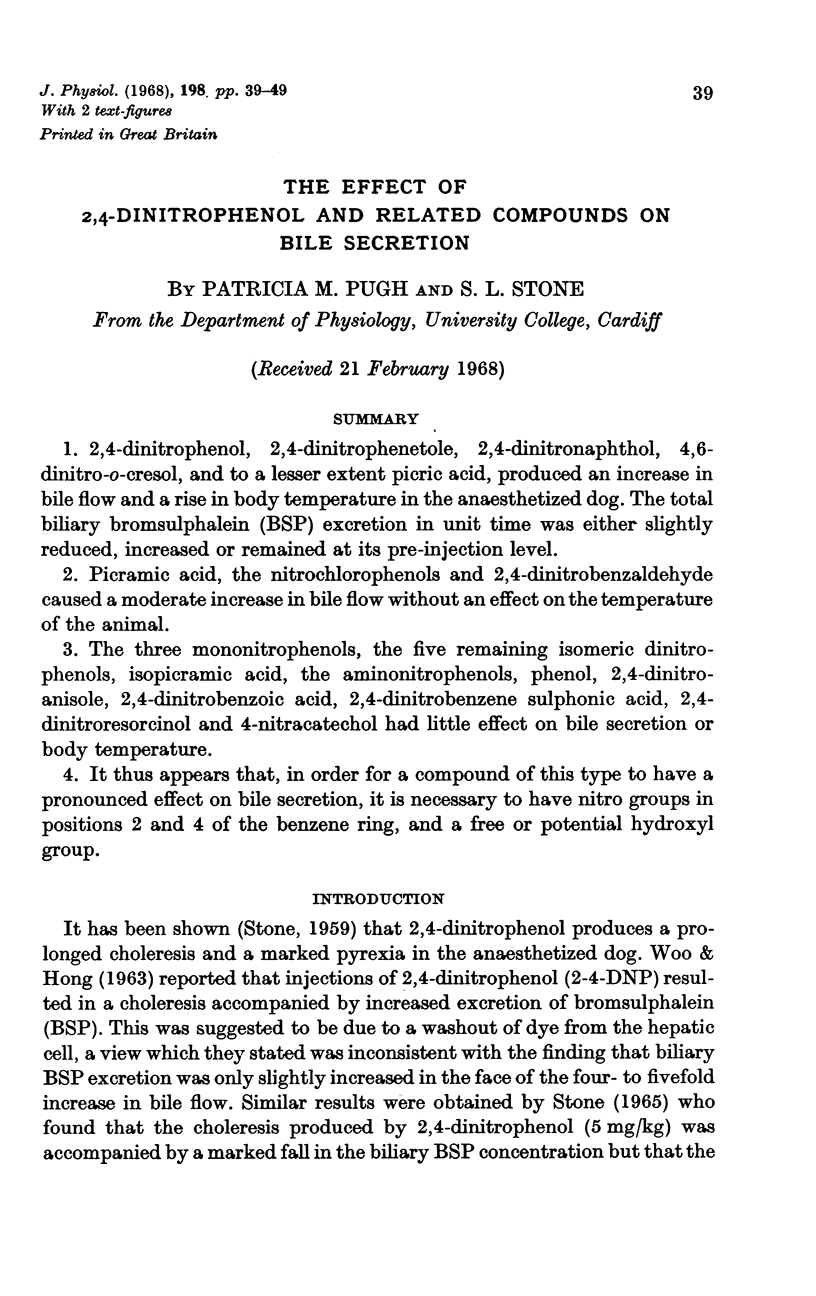
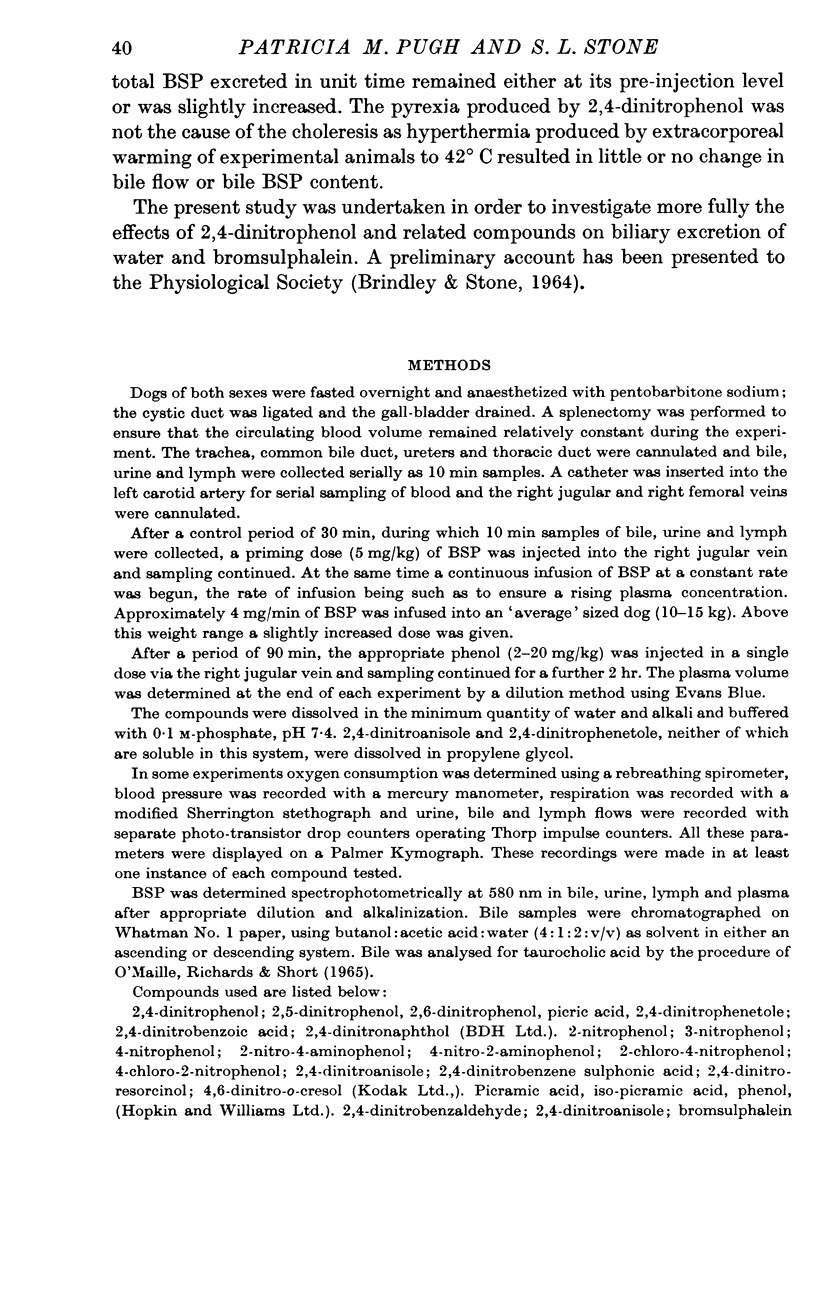
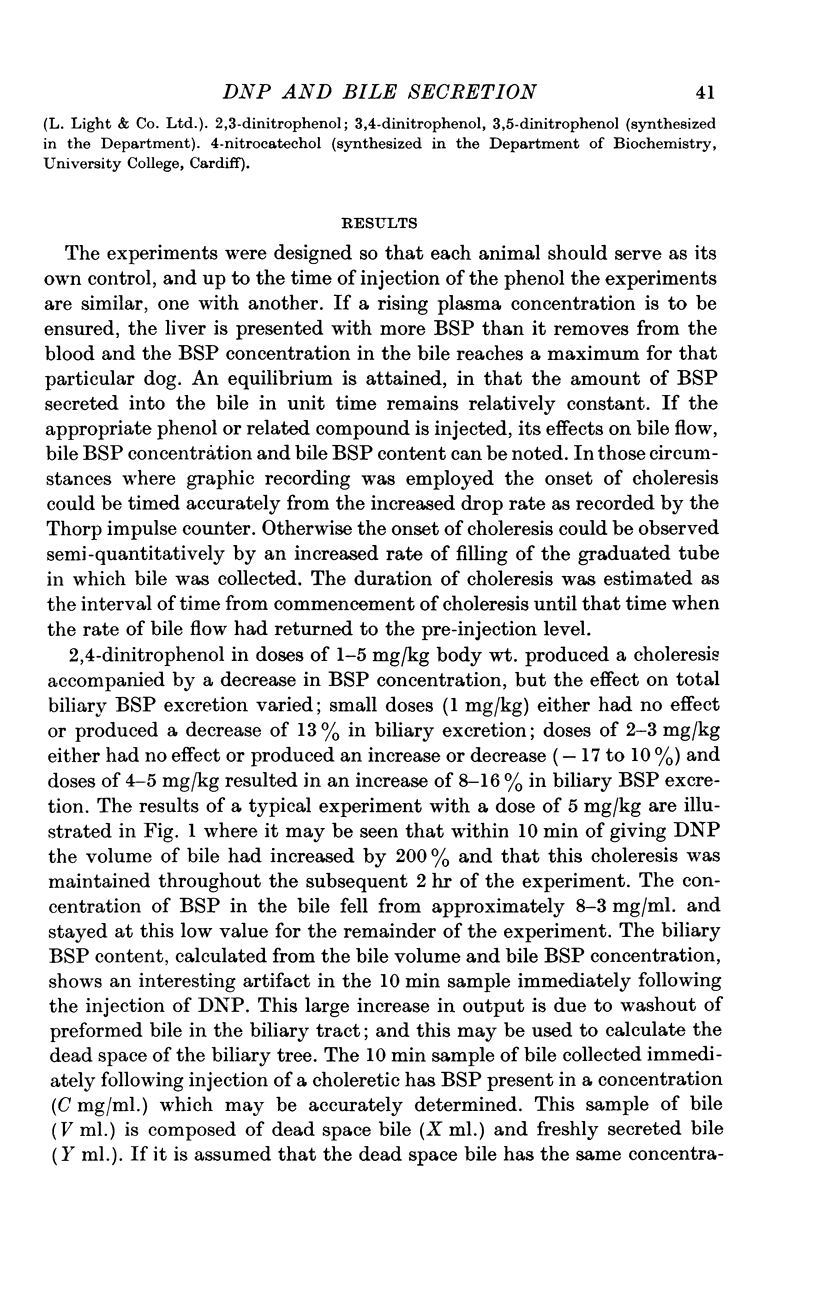
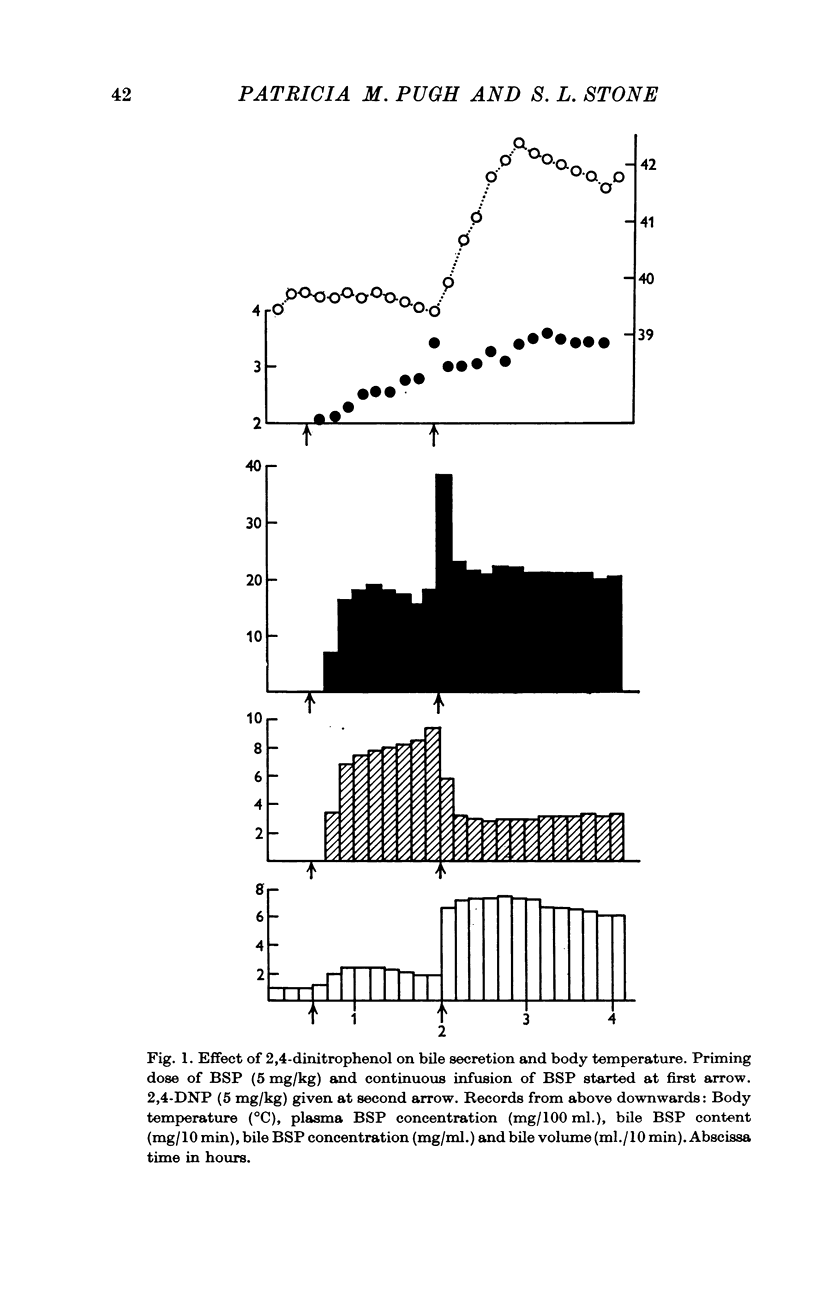
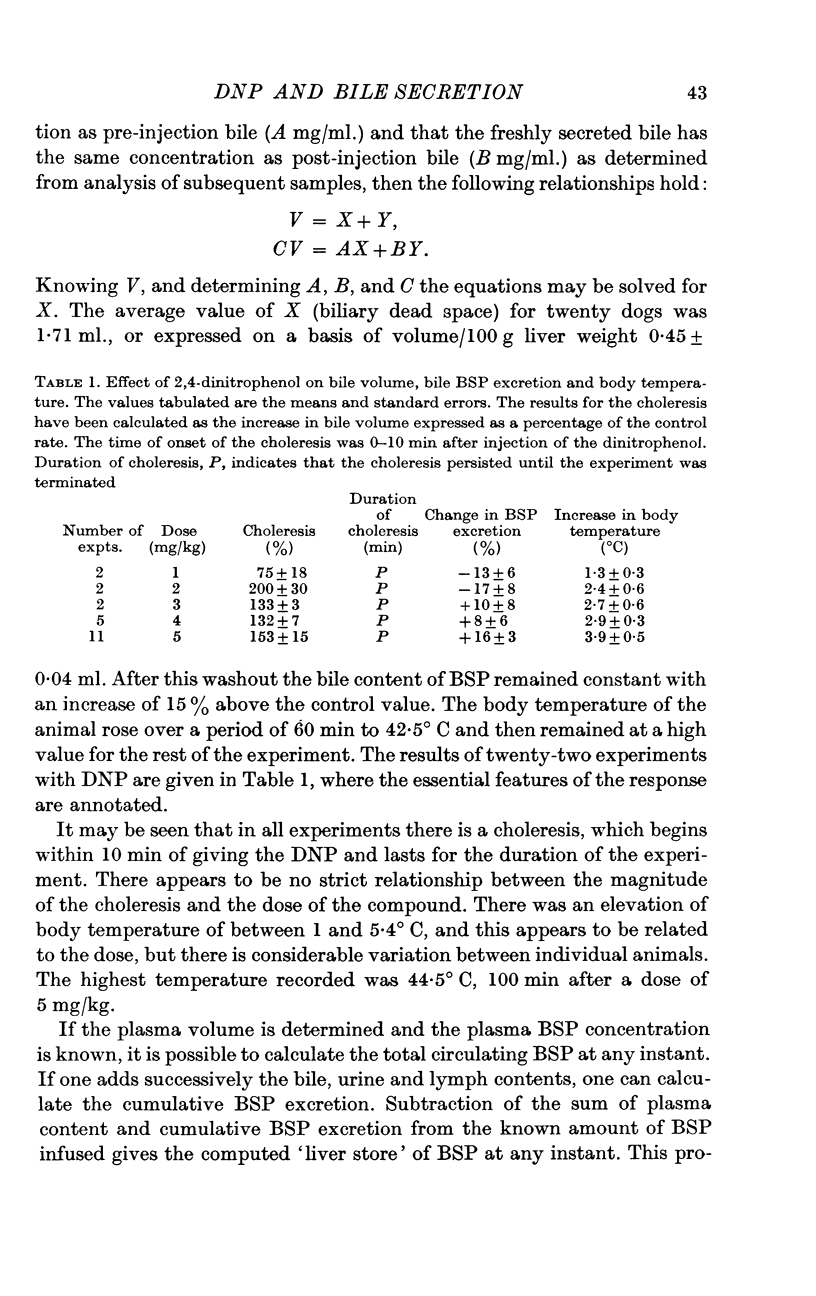
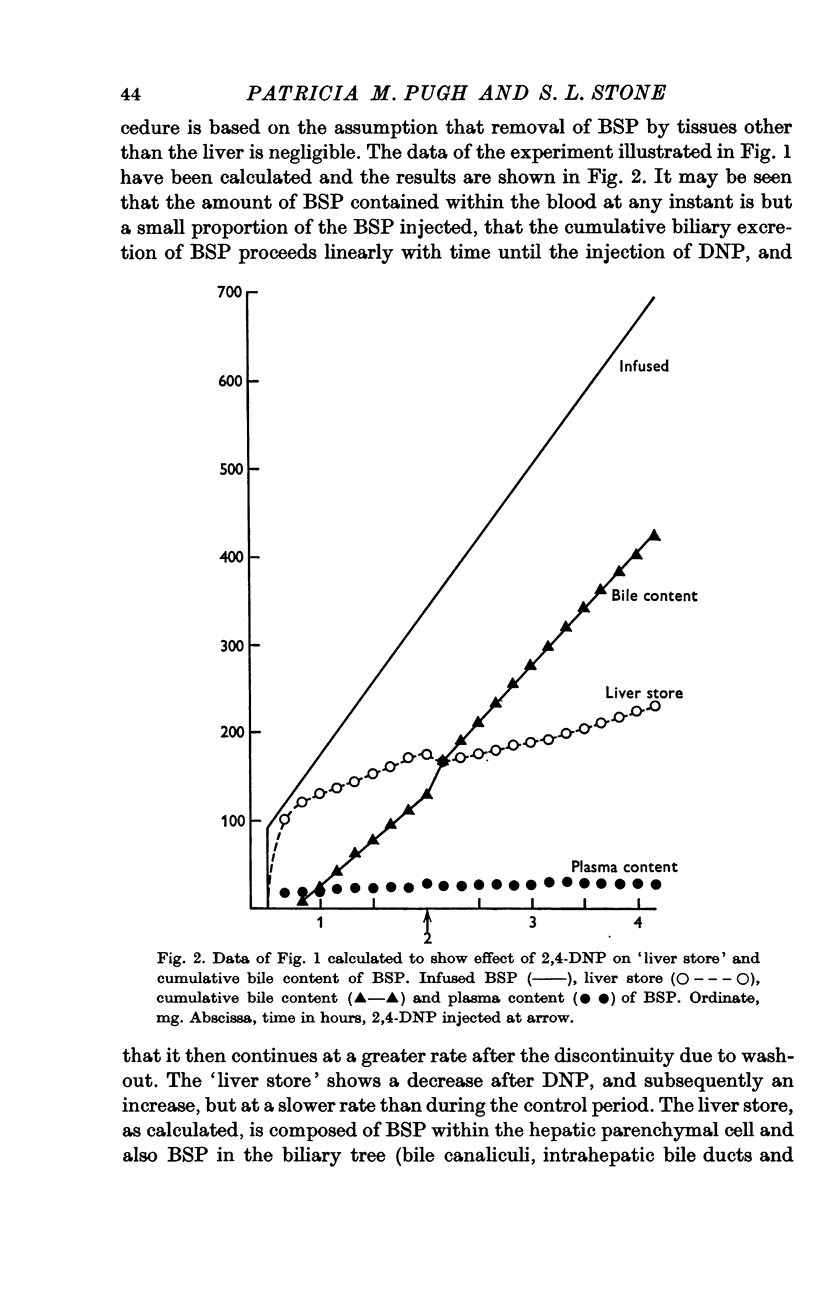
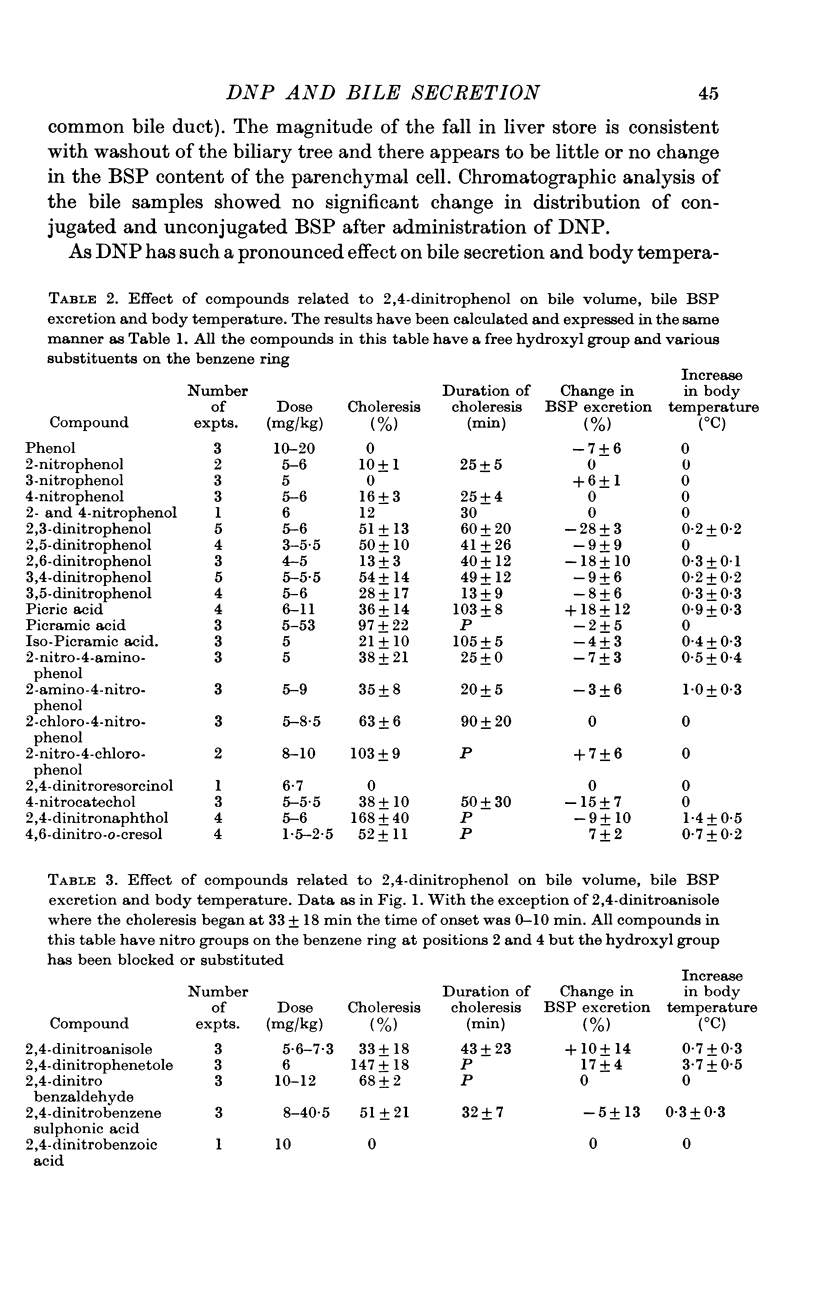
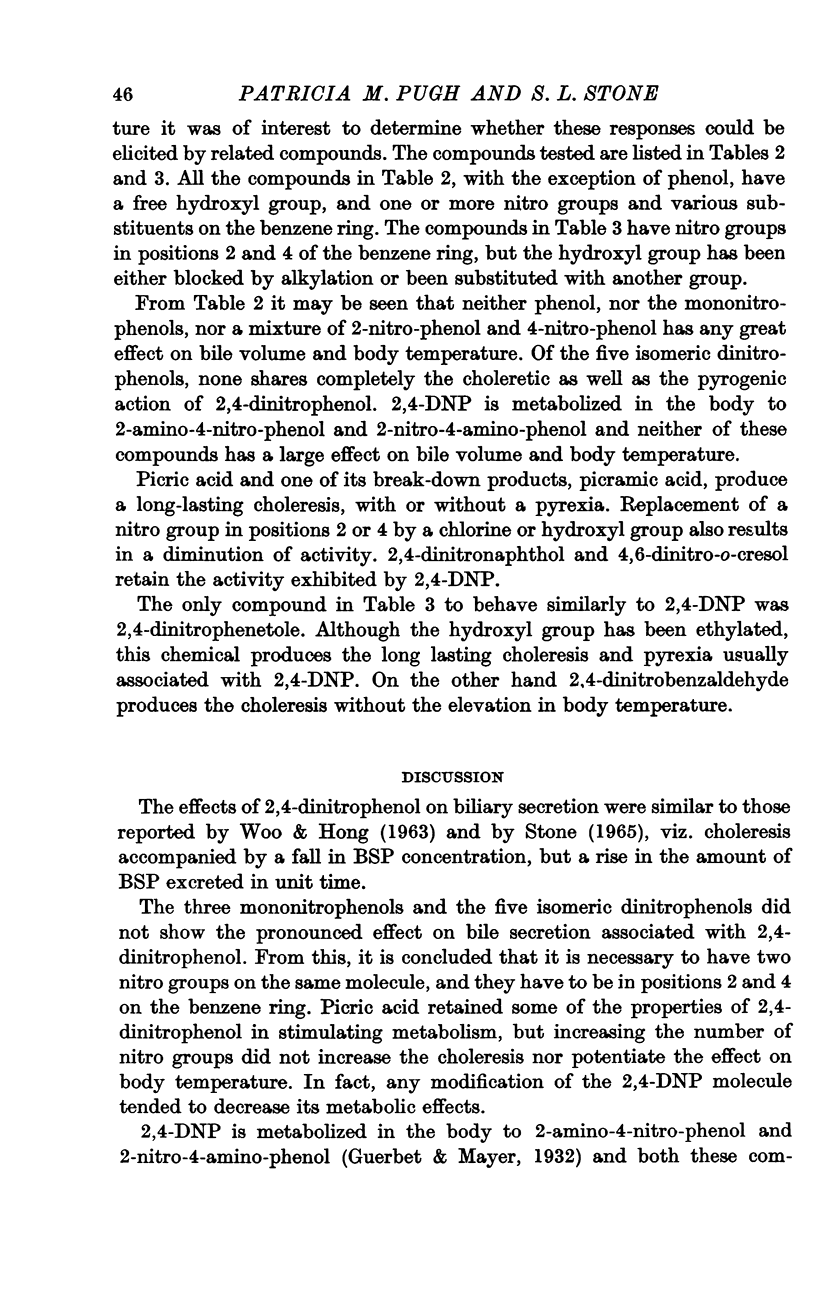
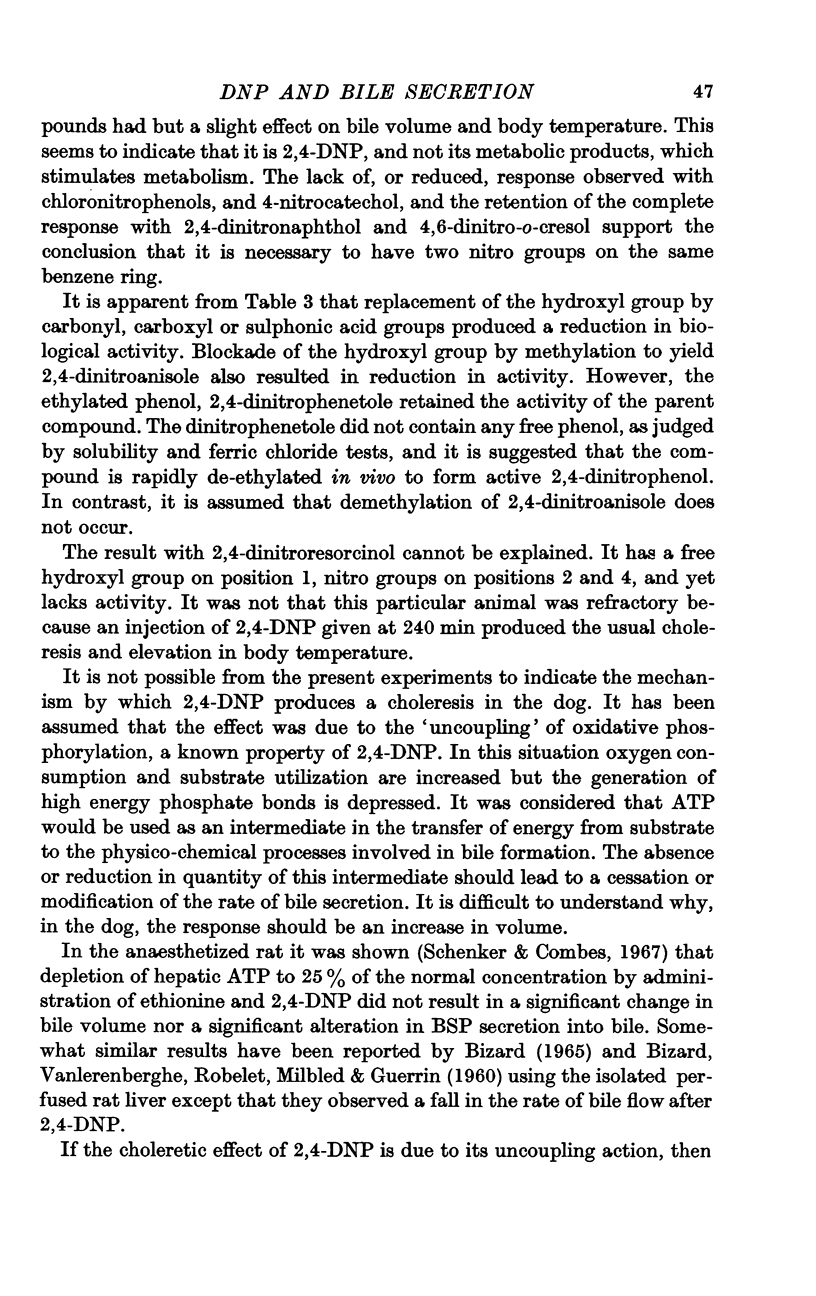
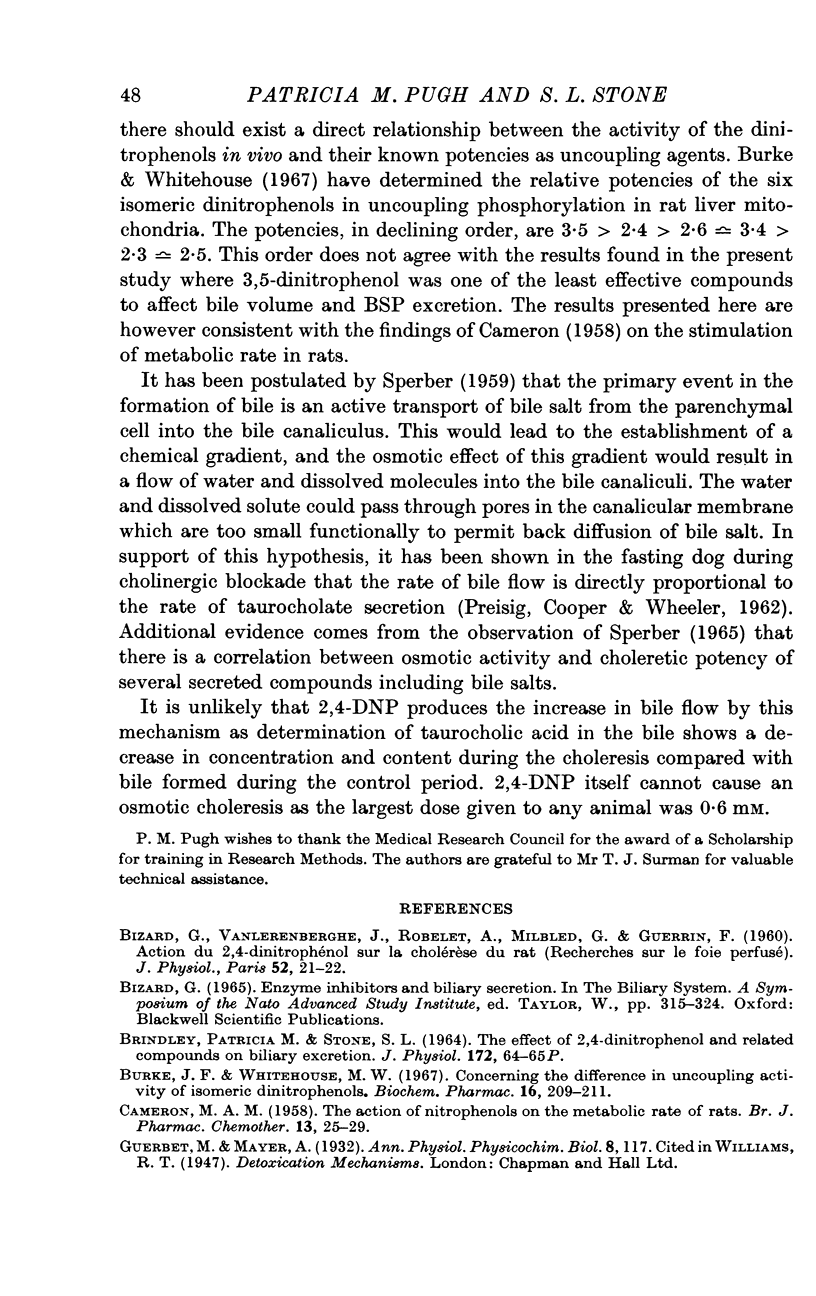
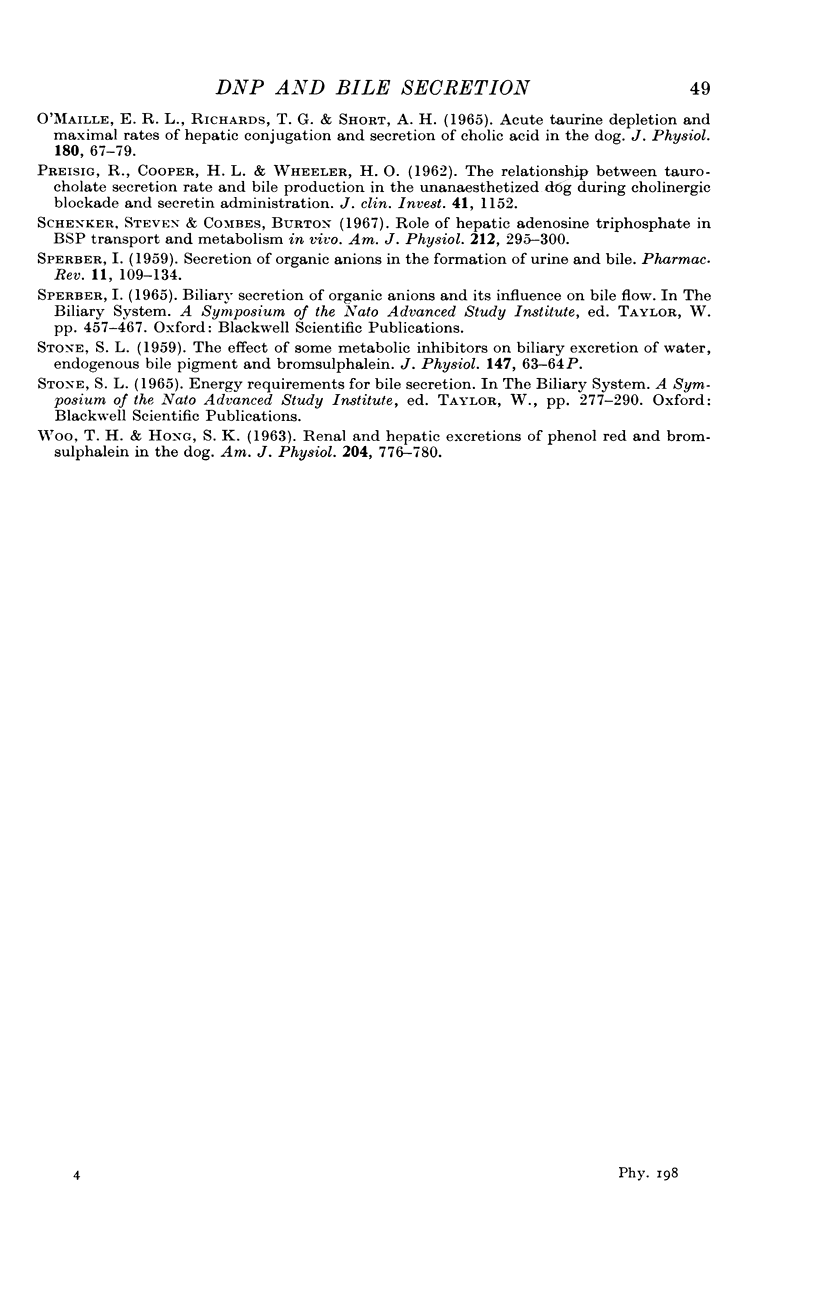
Selected References
These references are in PubMed. This may not be the complete list of references from this article.
- BIZARD G., VANLERENBERGHE J., MILBLED G., GUERRIN F., ROBELET A. [Action of 2,4-dinitrophenol on choleresis in the rat (research on the perfused liver)]. J Physiol (Paris) 1960 Jan-Feb;52:21–22. [PubMed] [Google Scholar]
- CAMERON M. A. The action of nitrophenols on the metabolic rate of rats. Br J Pharmacol Chemother. 1958 Mar;13(1):25–29. doi: 10.1111/j.1476-5381.1958.tb00185.x. [DOI] [PMC free article] [PubMed] [Google Scholar]
- O'Máille E. R., Richards T. G., Short A. H. Acute taurine depletion and maximal rates of hepatic conjugation and secretion of cholic acid in the dog. J Physiol. 1965 Sep;180(1):67–79. [PMC free article] [PubMed] [Google Scholar]
- PREISIG R., COOPER H. L., WHEELER H. O. The relationship between taurocholate secretion rate and bile production in the unanesthetized dog during cholinergic blockade and during secretin administration. J Clin Invest. 1962 May;41:1152–1162. doi: 10.1172/JCI104568. [DOI] [PMC free article] [PubMed] [Google Scholar]
- SPERBER I. Secretion of organic anions in the formation of urine and bile. Pharmacol Rev. 1959 Mar;11(1):109–134. [PubMed] [Google Scholar]
- Schenker S., Combes B. Role of hepatic adenosine triphosphate in BSP transport and metabolism in vivo. Am J Physiol. 1967 Feb;212(2):295–300. doi: 10.1152/ajplegacy.1967.212.2.295. [DOI] [PubMed] [Google Scholar]
- WOO T. H., HONG S. K. Renal and hepatic excretions of phenol red and bromsulphalein in the dog. Am J Physiol. 1963 May;204:776–780. doi: 10.1152/ajplegacy.1963.204.5.776. [DOI] [PubMed] [Google Scholar]


